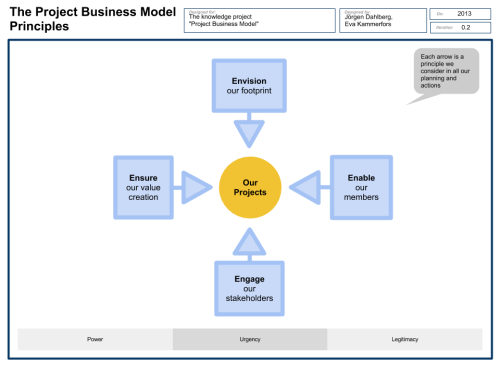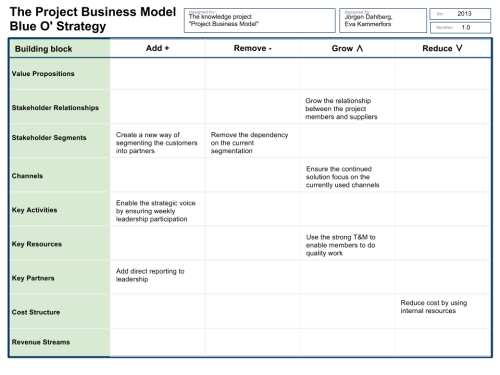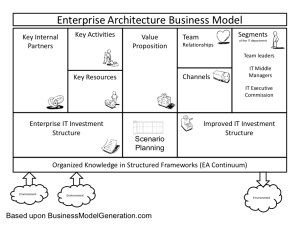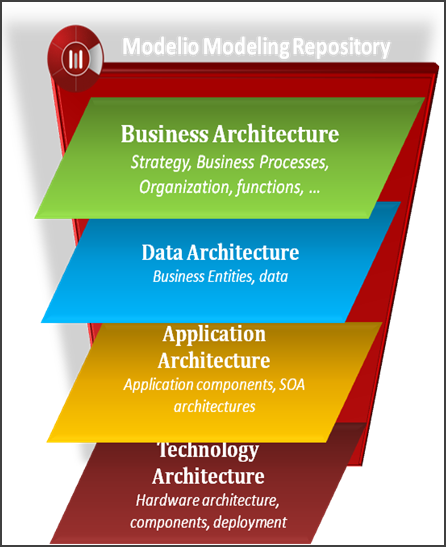Enterprise Architecture in Spain. ------------------------------------------------------------------------------------------------------- Arquitectura Empresarial en España. ---------------------------------------------------------------------------------------------------- A collection of EA things (post, twits, files, blogs...) I find on the internet (TOGAF, Zachman, PEAF, FEAF, Gartner ...)
viernes, 31 de mayo de 2013
2013 EA Summer Schools

The 2013 Nordic EA Summerschools are for students, researchers and practitioners in the field of enterprise architecture, who want to spend a week together and share and learn more about EA.
In 2013, two summer schools are arranged:
- 12-16 August 2013 - Finland
- 19-23 Aug 2013 – Denmark
Reserve the dates!
Themes:
- EA as a Discipline and a Profession
- Trends in Enterprise Architecture Practice and Research
- Selected Industry EA developments
Workshops on:
- … (suggest a workshop!)
With five days full of breakout-workshops, keynotes, guest contributions, and globally distributed participation/lectures (video links), the summer schools will cater for both newcomers and seasoned enterprise architects.
Read more at http://2013.internationaleainstitute.org.
miércoles, 29 de mayo de 2013
lunes, 27 de mayo de 2013
SMCE
TOGAF defines "enterprise" as any collection of organizations that has a common set of goals. For example, an enterprise could be a government agency, a whole corporation, a division of a corporation, a single department, or a chain of geographically distant organizations linked together by common ownership.
The term "enterprise" in the context of "enterprise architecture" can be used to denote both an entire enterprise - encompassing all of its information and technology services, processes, and infrastructure - and a specific domain within the enterprise. In both cases, the architecture crosses multiple systems, and multiple functional groups within the enterprise.
Confusion often arises from the evolving nature of the term "enterprise". An extended enterprise nowadays frequently includes partners, suppliers, and customers. If the goal is to integrate an extended enterprise, then the enterprise comprises the partners, suppliers, and customers, as well as internal business units.
domingo, 26 de mayo de 2013
What is Enterprise Architecture?
Enterprise Architecture (EA) is a discipline that has gained and will continue to gain huge importance to master enterprise organization and its IT support.
Enterprise Architecture is a complete expression of the enterprise, a master plan which “acts as a collaboration force” between aspects of business planning (such as goals, visions, strategies and governance principles), aspects of business operations (such as business terms, organization structures, processes and data), aspects of automation (such as information systems and databases) and the enabling technological infrastructure of the business (such as computers, operating systems and networks).
Enterprise architects use various business methods, analytical techniques and conceptual tools to understand and document the structure and dynamics of an enterprise. In doing so, they produce lists, drawings, documents and models, together called "artifacts". These artifacts describe the logical organization of business functions, business capabilities, business processes, people, information resources, business systems, software applications, computing capabilities, information exchange and communications infrastructure within the enterprise.
Strategic and Tactical Planning: Understanding the Difference

Many small business owners and operators do not spend much time planning for their business success. The biggest reason, in my opinion, is that they are not aware how easy it can be. Most owners, when they hear the words Strategic Planning or Tactical Planning, get a glazed-eyed look on their faces. Actually, these can be rather simple tasks to manage if you understand a few things about them. Instead most business operators are in a state of confusion about what each of these terms mean.
The reason for this confusion stems from the fact that both words are closely connected and, unfortunately, used interchangeably. Yet, in business terminology, the words strategy and tactics refer to separate business functions and practices.
Strategy Sets the Stage In real world business usage, the term Strategy actually is the thinking process required to plan a change, course of action, or organization. Strategy defines, or outlines, the desired goals and why you should go about achieving them. The strategic planning phase involves business thinkers (namely you – the small business owner) determining why, and in a global sense what, you will achieve in your stated goals. Owners or upper management decide what the guiding philosophy and values will be, and how people involved in the businesses operations should act, in attaining their objectives. It can be a compilation of many complex multi-faceted plans created for achieving your pre-established objectives.
But Tactics Is the Play Tactics are the specific actions you take in implementing your strategy. These actions comprise what is to be done, in what order, using which tools and personnel. You may employ a number of tactics and involve many different departments and people in this effort to reach a common goal. You may even recruit suppliers to accomplish your objectives. Tactics typically requires the involvement of the organization as a whole.
Strategic Planning Process To understand the differences better, here are some notable points to consider, with respect to strategic planning. When doing strategic planning, you need to determine, specifically, what outcome you want to achieve (These are your Objectives) and how you will measure the results.
In addition, you need to establish a realistic baseline or starting point. (Where are you now?) Include in your planning a picture of internal and external realities that will impact your plan. This dictates that you do relevant research (competitive, market, etc). You will then need to craft an aggressive action plan to take advantage of opportunities discovered during your research. This will include a listing of your defined strategic objectives, with the tactics you expect to use to achieve them. The plan should reflect both perceived challenges and the expected end results in order to be complete.
To ensure support for the strategy, it is advisable to conduct consensus-building exercises for the company. You might include Marketing, Sales, Customer Service, and other personnel inside and outside your organization. Any uncertainties and risks will be sure to surface at this point in the strategic planning process.
Tactical Planning Process In tactical planning, you need to understand and decipher the strategic goals; then identify the courses of action you will need to achieve those strategic objectives. Tactical planning is developed by those who deal with getting the work done, day by day. They draw up a tactical plan so they know what to do, when they need to do it, and this will help them deal with the “how” part of the plan. The main question for them is: “How can the strategic goals be accomplished within the designated limits of resources and authority?” The only way that can happen is to insure that the tactics create results which lead to the strategic benefits you desire.
Popular Hiring & Development Resources
As a small business owner, you need to make plans that include specific activities that are arranged on specified time frames and have specific outcomes. Ensure the performance of all tactical planning activities and calculate their effects; then help connect the tactical moves to the strategic plan.
In Summary To sum up, strategic planning relates to issues pertinent to the mission of your small business—the purpose of its existence. The responsibility for strategic planning rests with you (and your partners and investors, if any). No one else is ever going to do that work for you, or without your involvement!
Tactical planning relates to actions taken day-to-day, and whose results will move the company forward to achieve the objectives outlined in the strategic plan. The responsibility to plan this belongs to those who perform the work. They are truly the only ones qualified to plan it. Strategic is the what and why. Tactical is the how.
The terms tactical and strategic are fundamental to an understanding of the different responsibilities attached to management and governance of any small business. If you fail to do this for your company, then you are driving a 1000 mile race without a roadmap. If you don’t know where you are going, or how you are going to get there, then where you end up will most likely not be where you hope.
No destination is the destination of the un-destinated!
If you would like help with any part of the planning process or implementation of your plan, please contact BestFit Solutions. As frequent travelers of this road, we can provide a map to make sure you end the race, exactly where you want to be.
viernes, 24 de mayo de 2013
Linking business strategy and IT strategy


http://improving-bpm-systems.blogspot.com.es/2013/02/linking-business-strategy-and-it.html
http://improving-bpm-systems.blogspot.com.es/2013/02/linking-business-strategy-and-it.html
http://blogs.hbr.org/cs/2013/02/strategy_is_all_about_practice.html
http://improving-bpm-systems.blogspot.com.es/2011/09/writing-it-strategy.html
jueves, 23 de mayo de 2013
TOGAF® and ISO Standards
http://blog.goodelearning.com/togaf/togaf-iso-standards
TOGAF embraces but does not strictly adhere to ISO/IEC 42010:2007 terminology
Implementing Enterprise Architecture: A trail of blood, sweat and tears
This is the first in a series of blog posts by Corey Balko on his memoirs implementing Enterprise Architecture (EA).
What do you think of when you hear the words Enterprise Architecture or EA? If you think of  bureaucracy or the gaming company Electronic Arts, then you couldn't be further from the truth.
bureaucracy or the gaming company Electronic Arts, then you couldn't be further from the truth.
Enterprise Architecture is defined by Gartner as the process of translating business vision and strategy into effective enterprise change by creating, communicating and improving the key requirements, principles and models that describe the enterprise's future state and enable its evolution. This is a verbose way of saying EA manages complexity and delivers business value.
http://www.intact-tech.com/blog/implementing-enterprise-architecture/
miércoles, 22 de mayo de 2013
CEO and Senior Executive Survey 2013: The Opportunity Now Is to Drive EA From Business Priorities
http://www.gartner.com/technology/reprints.do?id=1-1FKHRJA&ct=130510&st=sb
Enterprise architecture supports CEOs' and senior business executives' focus on growth in an uncertain environment.

Overview
Impacts
- With business growth as the No. 1 strategic business priority, enterprise architects must support growth initiatives in an environment of increased uncertainty.1
- Enterprise architects must support initiatives that are focused on increasing the productivity of business operations.
- Since aligning with customer needs is central to growth and profitability, enterprise architects must facilitate the design of customer value and profitability.
Recommendations
- Use business-outcome-driven enterprise architecture (EA) to identify and focus on initiatives that drive growth.
- Drive profitability through process improvement, cost reduction and innovation.
- Develop a customer-centric EA.
TABLE OF CONTENTS
CONTENTS
- Analysis
- Impacts and Recommendations
- With business growth as the No. 1 strategic business priority, enterprise architects must support growth initiatives in an environment of increased uncertainty
- Enterprise architects must support initiatives that are focused on increasing the productivity of business operations
- Since aligning with customer needs is central to growth and profitability, enterprise architects must facilitate the design of customer value and profitability
- Survey Methodology
FIGURES
Figure 1.
CEOs and Senior Business Executives on Top 10 Business Priorities
Figure 2.
Impact and Top Recommendations for Enterprise Architects
Figure 3.
CEO and Senior Executives on Investment Changes for 2013
Figure 4.
CEOs and Senior Business Executives on the Extent of Digital Strategy
Figure 5.
CEOs and Senior Business Executives on the Effect of the Business Environment on Planning
Figure 6.
CEOs and Senior Business Executives on Average Percentage of Investments Wasted
Figure 7.
Figure 8.
Approach to Business Innovation
Figure 9.
Use Information to Understand Your Customers
Figure 10.
Modeling the Customer Experience

Analysis
In the wake of the global financial crisis, CEOs are striving for growth in an uncertain environment. They are combining growth with driving profitability through improved performance and cost reduction, with a focus on the customer (see Figure 1). They are doing this at a time when 68% of CEOs see business conditions as "rather uncertain" and 22% expect a reduced ability to plan.
Figure 1. CEOs and Senior Business Executives on Top 10 Business Priorities

Q: Tell us about the top three to five business priorities for your organization in 2013 that are most important to its success.
N = 391 CEOs and senior business executives
Source: Gartner (March 2013)
According to Gartner, business-outcome-driven EA is a "strategic discipline focused on execution." It delivers business value by helping organizations execute their business strategies. In effect, the challenges of growth, profitability and the customer become top-line business outcomes that enterprise architects must help drive. However, this role continues to face the challenge of linking EA with business strategy, evidenced by survey data showing it is CEOs' No. 1 priority for 2013.
The challenge facing enterprise architects is to deliver signature-ready recommendations that can help their organizations meet the objectives set out by their CEOs, and EA helps deliver business value (see Figure 2). In this research, we examine the results of our annual CEO survey and provide recommendations on how enterprise architects must respond to the strategic business priorities set out by CEOs.1
Figure 2. Impact and Top Recommendations for Enterprise Architects

Source: Gartner (March 2013)
Impacts and Recommendations
With business growth as the No. 1 strategic business priority, enterprise architects must support growth initiatives in an environment of increased uncertainty
In our CEO survey, 23% of respondents selected growth as their No. 1 priority, while 41% ranked it as one of their top three priorities. There are many ways that companies can achieve growth, ranging from the introduction of new products and services to entering new markets. Enterprise architects must proactively identify the initiatives linked to growth and give them high priority.
Provide Support to Product Development/Enhancement and Sales
Our CEO survey shows the key growth-related areas in which CEOs are invested (see Figure 3). Two key areas stand out: product enhancement and sales. For many companies, product life cycles are becoming shorter, much like the time to earn revenue from a product, and competition is increasing. The consumer electronics industry is a good example of this trend. To succeed, companies need to have faster product life cycle management processes linked to high-performance supply chains to get products to meet demand. Enterprise architects have the opportunity to support these areas by helping to define and optimize the product life cycle management (PLM) processes, and supporting the supply chain team in creating a demand-driven supply chain.
Figure 3. CEO and Senior Executives on Investment Changes for 2013

Q: Compared to FY12, how will your organization's investments in the following business areas change in FY13?
N = 391 CEOs and senior business executives (bases vary by area; excludes "N/A" responses)
Source: Gartner (March 2013)
The second area of increased investment is sales. Many companies have achieved growth by simply adding to the number of sales executives they have, thereby extending their ability to reach new customers and markets. Adding sales executives is often coupled with the improvement of sales processes and supporting technologies, along with the use of business intelligence (BI) applications to more effectively target prospects. These are also areas where enterprise architects can make a significant contribution by supporting business executives who are running these initiatives.
Support the Development of a Digital Strategy
The Nexus of Forces — that is, the convergence and mutual reinforcement of social, mobility, cloud and information patterns that drive new business scenarios — is having a powerful impact on almost every organization. These forces also open new opportunities for almost every organization by providing access to new customers and markets, and facilitating innovation in the way that organizations deliver their products and services. To take advantage of these opportunities, organizations must have a well-defined digital strategy.
The reality is that, despite the significant impact of the Nexus of Forces, only 32% of organizations have a digital strategy that is part of their main business strategy (see Figure 4). There is a big opportunity for the development of a more complete digital strategy that takes advantage of the latest developments in IT and uses them to support the business outcomes that the main business strategy aims to drive. This is an ideal area for the CIO and business to partner, one in which the analytical and diagnostic deliverables of EA are ideally suited. EA practitioners can help their organization develop a digital strategy by working with business executives to identify where new technologies can support business outcomes.
Figure 4. CEOs and Senior Business Executives on the Extent of Digital Strategy

Q: To what extent does your organization have a digital strategy today?
N = 391 CEOs and senior business executives
Source: Gartner (March 2013)
Create the Agile Enterprise
Uncertainty is a key theme running through this year's CEO survey, with 22% of CEOs expecting a reduced ability to plan (see Figure 5; see "CEO and Senior Executive Survey 2013: Business Uncertainty Is an Opportunity for EA to Take Leadership Role"). In the wake of the global financial crisis, economic uncertainty is prominent, followed by market conditions and the regulatory environment. Continuing to grow in an uncertain environment is a challenge that many companies face.
Figure 5. CEOs and Senior Business Executives on the Effect of the Business Environment on Planning

Q: How do you expect conditions in the business environment to affect your organization's business planning during 2013 and 2014?
N = 391 CEOs and senior business executives
Source: Gartner (March 2013)
Uncertain conditions favor agile companies that can reprioritize and adapt quickly to the lessons learned from their environments. Agile enterprises are characterized by simplicity, modularity, quick and regular review cycles, strong change management, and good leadership. Enterprise architects must adapt their approaches and processes to ensure that they are able to help their organizations change quickly by identifying where change must happen before it needs to happen, and facilitating business and IT change execution. This means getting ahead of change by understanding the disruptive trends that may affect your business, as well as how your business direction may need to change and evolve.
Recommendations:
- Complete the enterprise context analysis, and identify strategies and business outcomes linked to growth. Make this a priority.
- Work with business and IT stakeholders to help develop a digital business strategy.
- Create an agile EA practice, and look for ways to proactively use EA to plan for change before there is a need to change.
Enterprise architects must support initiatives that are focused on increasing the productivity of business operations
Increasing the profitability of business operations is the second priority for CEOs. This combines increasing the performance and output per unit input, and reducing the cost of business operations. We see performance improvement and cost reduction at play, with cost being the No. 4 priority. Many companies are looking to these improvements in profitability to fund investments in growth.
Use Business-Outcome-Driven EA to Drive Execution
Most organizations invest a great deal of effort in developing a business strategy and almost none on the execution process. It is in the execution process that the majority of strategies fail. In fact, Dr. David Norton puts the rate of failure of business strategy at 90%.1 In a tough economic environment, companies cannot afford to waste valuable resources on strategies that fail. They must pick the winners and execute flawlessly, which is something that business-outcome-driven EA supports.
Companies continue to waste their investments on unproductive strategies and business areas (see Figure 6). Enterprise architects can help drive productivity and eliminate waste by driving the adoption of business-outcome-driven EA. By clearly identifying the expected business outcomes and having a well-understood process to execute, the chances of success significantly increase.
Figure 6. CEOs and Senior Business Executives on Average Percentage of Investments Wasted

Q: In each of these business areas, what percentage of your organization's investment do you believe typically ends up being unproductive and wasted? (Estimate the percentage wasted today.)
N = 391 CEOs and senior business executives (bases vary by area; excludes "N/A" responses)
Source: Gartner (March 2013)
Support Performance Improvement Though the Use of IT
Improvements in performance can be achieved in a number of ways. The two most common are the redesign of the supporting business processes and the use of IT to automate the business process. Typically, these are done in combination. As many companies have found out, to be successful, performance improvement is rarely achieved through technology alone.
CEOs are making significant investments in technologies to drive business improvements (see Figure 7). EA can be used to ensure that these technologies deliver the business performance improvements sought by clearly identifying and linking them to the business outcomes that they are intended to drive, as well as the business capability and business process change needed. A business outcome is a specific and measurable target action that is taken in response to a business direction (or a change in business direction) or a business disruption. The best way to ensure that a business outcome is targeted to meet business needs is to map to the critical strategic questions that senior executives ask. Enterprise architects can add value by providing insight and line of sight into business operations to identify the opportunities for these technologies, and ensuring that they are implemented to deliver the business outcomes.
Figure 7. CEOs and Senior Business Executives on the Technology Investments for Business Improvements (Ranked by Importance)

Q: Which of the following technology-enabled capabilities will be an important area of investment to improve your business over the next five years?
N = 391 CEOs and senior business executives
Source: Gartner (March 2013)
Improve Performance Through Innovation
A third way to drive performance improvement is through innovation — that is, fundamentally changing the way the business operates. For many organizations, innovation is more a matter of luck than planning. Few organizations have developed a formal process to identify and track new ideas — technology or otherwise — and to show how they can be used to transform a business. As our CEO survey shows, many companies are also very conservative when it comes to innovation (see Figure 8).
Figure 8. Approach to Business Innovation

For blue pie chart: N = 391 CEOs and senior business executives
For green pie chart: N = 106 pioneers
Source: Gartner (March 2013)
Enterprise architects can support innovation by identifying innovative opportunities, business and technology, as well as by showing how they may be used to support business outcomes. For example, some EA teams map innovations to business capabilities, identifying where innovations can impact their organizations' business. These are then used as a basis for discussion, with business executives a part of the strategy process. Innovation must be a natural part of the EA practice.
Recommendations:
- Use business-outcome-driven EA to guide the execution of strategy and increase project success.
- Use EA to improve process performance by designing business and IT change.
- Use EA to bring innovative new ideas and opportunities that can drive business performance.
Customers are rated the joint second top priority by CEOs and senior business executives. Many strategies contain a customer element, with the goal being profitability from customer satisfaction through retention, cross-selling and upselling. This is based on an improved understanding of individual customer needs and preferences, which implies constantly tracking customer interactions across channels and responding accordingly.
Since aligning with customer needs is central to growth and profitability, enterprise architects must facilitate the design of customer value and profitability
The customer is central to CEO and senior business executive growth objectives by gaining new customers and increasing the profitability of existing customers. Below, we review how enterprise architects can support these objectives.
Analyze Your Customers
Not all customers are the same. Some want high levels of customer service and are willing to pay for it, and others just want the best price. Understanding your customer needs begins with a segmentation analysis that groups customers based on the similarity in defined dimensions, such as age, buying behavior or income. This segmentation analysis helps identify customer groups, and the value propositions that motivate them to purchase and be loyal to the company, which is then used as a basis for product development, service delivery, and sales and marketing.
With the advances in big data and analytics, it is now possible to create a deeper understanding of customers and buying patterns, and to do it in near real time (see Figure 9). To be effective, this requires an information architecture that moves beyond the data in the transaction systems to take on a wider perspective by pulling data from numerous sources. This must be combined with an analytical process used to test hypotheses and gain new insights into customers, which then feeds into projects and initiatives to innovate the customer experience across the company. This connects the information architecture with the EA in driving these changes.
Figure 9. Use Information to Understand Your Customers

Source: Gartner (March 2013)
Innovate the Customer Experience
For most companies, customers interact across the sales life cycle that spans multiple channels (for instance, beginning their interactions online or perhaps visiting a retail outlet, completing the purchase online and then using the after-sales service via a call center). In many cases, this can be a disjointed experience for both the customer and the company. To encourage customers to buy and keep coming back, this experience must be simple and done collaboratively to create a clear understanding of customers and their needs.
EA teams should consider customer experience modeling as a diagnostic deliverable to help analyze and design the customer interactions with the company. This can be done in two ways. The first is to create a set of scenarios by customer segment, and then flow through the interaction process by identifying the steps (for example, what is happening, the information exchanged and the time it takes; see Figure 10). From this, it will be possible to identify opportunities to streamline and improve the processes and systems that support customer interactions.
Figure 10. Modeling the Customer Experience

Source: Gartner (March 2013)
Create a Customer-Centric EA
Even though the customer is central to commercial and government organizations, it is often very hard to look at the EA from the perspective of the customer. In most cases, the customer is implicit in the models and analysis that make up EA. Adding such a perspective would be valuable in understanding how the organization delvers value to its customers.
Enterprise architects must ensure that they have the ability to link the customer to the various models of EA, showing how value is delivered, where the business process touchpoints are, and what information is used — in other words, providing a view of the organization from the customer's perspective. This ability then provides the basis for EA to work with business executives on initiatives that focus on the customer.
Recommendations:
- Develop your information architecture and analytics to support real-time customer segmentation and analysis.
- Understand how customers interact with your company, and use this as a basis for innovating the customer experience.
- Create a customer-centric perspective in your EA by architecting from the outside in.
Survey Methodology
Gartner conducted research from October 2012 to December 2012 to examine CEO and senior business executive views on current business issues, as well as some areas of technology agenda impact. The bulk of the research was achieved through a Web-based survey among LinkedIn members, with 333 business leaders qualified and surveyed. An additional 58 surveys were collected through efforts administered via individual URLs, telephone interviews and paper surveys delivered in Japan. All respondents were screened for active employment in organizations with more than $250 million in annual revenue.
The sample mix is as follows:
- CEOs = 147
- CFOs = 149
- COOs = 49
- Chairman, president, board of directors or other C-level = 46
Here is the mix by region:
- North America = 152
- Europe = 124
- Asia/Pacific = 78 (20 from Japan)
- Brazil = 20
- South Africa = 12
- Middle East = 5
The survey was developed collaboratively by a team of Gartner analysts who follow the IT market, and was reviewed, tested and administered by Gartner's Research Data Analytics (RDA) team, with Heather Keltz as project manager. The results of this study are representative of the respondent base and not necessarily the market as a whole.


























